Media | Articles
Drop the Top and Free Your Soul with a Convertible
This article first appeared in the May/June issue Hagerty Drivers Club magazine. Join the club to receive our award-winning magazine, and as part of the first-ever HDC Days from June 21 to June 23, Hagerty Drivers Club members will be eligible for some amazing deals, cool contests, and epic events and experiences. Not an HDC member? Sign up today!
Seductive as the tropical beaches and emerald waters shown in glossy brochures, tourism companies always make their travel packages sing. Follow the path of the Rhine aboard a comfy bed-and-breakfast barge; glimpse glaciers on an Alaskan cruise; or ride the Skunk Train through the redwoods. So close, you can almost touch history. But sometimes, you can’t actually do anything, let alone control your route or pace. In 2024, the price of a monthlong luxury cruise for two is about $30,000. Yeah, you’ll see some cool stuff, but then the money’s gone.
We say: Go buy a convertible instead. You know you’ve always wanted one. Is this finally the year? Yes! Beating that cruise cost, the 1967 Lincoln Continental, 1973 MGB Mk III, 1974 Chevy Corvette, and 1986 Jeep CJ-7 Laredo models featured here average $28K in #3 (good) condition, according to Hagerty’s Valuation Tools. And instead of a one-and-done holiday, you get to enjoy the car for life. Get the hint? We did, and a few Hagerty staffers kicked off the 2024 summer travel season along California’s alluring Central Coast.
Characterized by two-lanes and highways, rural routes, and tiny towns, this was an ideal place to sample and compare these four affordable convertibles on a real-time basis. It was amazing and revealing, at times curious and confounding—maybe even weird, since the cars were quite disparate, like freewheeling vignettes roped together in a Tarantino film. Just for instance, the spacious Continental is nearly 18.5 feet long, weighs more than 5700 pounds, and wields an enormous 462-cubic-inch, 340-hp V-8 underhood. Why, a family of five could occupy the condo-size air cleaner, with room left over for a rat infestation. In contrast, the wee MGB is but 12.5 feet long, weighs a feathery 2240 pounds, and has a 110-cube (1.8-liter) inline-four under its bonnet. Like Mutt and Jeff or Schwarzenegger and DeVito, they don’t really belong on the same road at the same time. Or do they? Let’s see.
Magnetic MGB

On a crisp morning in tony Santa Barbara, our convertible posse purred over the coastal mountains toward the area’s famed wine country. Initially, we were in whine country due to the supercharger noise emanating from the MG. Built up by the team at Moss Motors, re-pop parts purveyors for vintage sports cars, the penultimate chrome-bumper MG also sported a five-speed Miata gearbox, Bilstein shocks, Wilwood four-piston disc brakes, and other upgrades. Its improved power, lazy overdriven top gear, and well-sorted chassis that included a Panhard rod to better locate the rear axle transformed the somewhat plebeian stock MGB (your author has owned several) into a quick enough, tight-handling, and high-speed-capable little sports car. With one demerit: The overstuffed “Deluxe” aftermarket upholstery shoved our thighs into the Moto-Lita wheel, whose wide rim blocked the gauges.
Marketplace
Buy and sell classics with confidence


The bustling morning drive swept us past the county’s largest reservoir, Lake Cachuma, whose quiet blue waters and surrounding rolling hills populated by coast live oaks imagined a scene from the English countryside. The MG was happy here, and so were we inside it, thanks partly to the roll-up side windows, which cut down on wind blast in the early chill. Happily, the plucky car had zapped us straight into a Goldilocks Zone for convertibles: stylish and sporty, simple and affordable, and quick, nimble, and fun.
Going fast was a blast, and the boosted-up MGB did it with aplomb. But when you’re in a carriage that’s barely 4 feet high, with precisely no crumple zones, door beams, airbags, or even a rollbar, a closing rate of 110 mph with oncoming Escalades and F-350s is disquieting. So, despite the MGB’s engineering improvements, we needed to find quieter country lanes, where less traffic, modest speeds, and lovely scenery would improve the experience. We knew just where to go: the Santa Ynez Valley, inland from coastal Santa Barbara and a renowned wine-growing region.

Here waited the type of roads on which the MGB was bred near the end of the 1950s, when BMC began working on a replacement for the old-school, body-on-frame MGA, itself deriving from a family of postwar sports cars beginning with the seminal 1948 MG TC. Intended largely for the U.S. market, the unibody MGB (first available as a roadster and later as a GT coupe—with a dabbling of six-cylinder MGC and V-8 versions available later) enjoyed a production run of 19 years, with over a half-million built. Modest in its pretensions, readily available, and inexpensive, the four-cylinder variant became the most successful product in MG history. This includes competition, where MGBs scored a multitude of class wins, including in the SCCA, at the Sebring 12 Hours, and even in the Targa Florio.
If you will, MG’s popular roadster was—and remains—the Ford Model A or Volkswagen Beetle of English sports cars. With virtually every hard part reproduced today—fenders, floors, and doors included—its lifespan is essentially limitless. As befitting a “people’s sports car,” Bs are simple to work on, encouraging ownership and use. Today, prices for the 1973 models range from $4800 to $38,000, per Hagerty data.
One Jittery Jeep

Following the first civilian Jeep of 1945, the CJ-2A, the blockbuster CJ-7 debuted in 1976 and lasted through ’86. Designed for more versatility and dynamic stability than the short, twitchy CJ-5, the long-wheelbase (93.5 inches) CJ-7 is regarded as the last Jeep with engineering tracing back to the original WWII military model. If you’re curious why it’s included here, it is actually more convertible than the other vehicles in this group, thanks to its availability with not only a removable soft or hard top, but removable doors, too.
We felt even more unprotected in the Jeep than in the MGB. Minus its doors, top, and side windows, the CJ-7 felt like a barely obedient roping horse. While driving, we could see the road streaking below the doorsills. The beefy 31-inch tires, elliptical leaf springs all around, and high center of gravity (the CJ stands close to 6 feet tall) made for a nervous ride at 55 mph. The CJ tolerated the morning’s fast, flowy route but clearly hungered for something different, like overlanding in the Mojave or the Sierras, or at least tracing some ranch road toward the Pacific, 25 miles to the west. This seemed at least within the realm of possibility, and the CJ-7 carried a shortboard behind the passenger seat for later use, just in case.

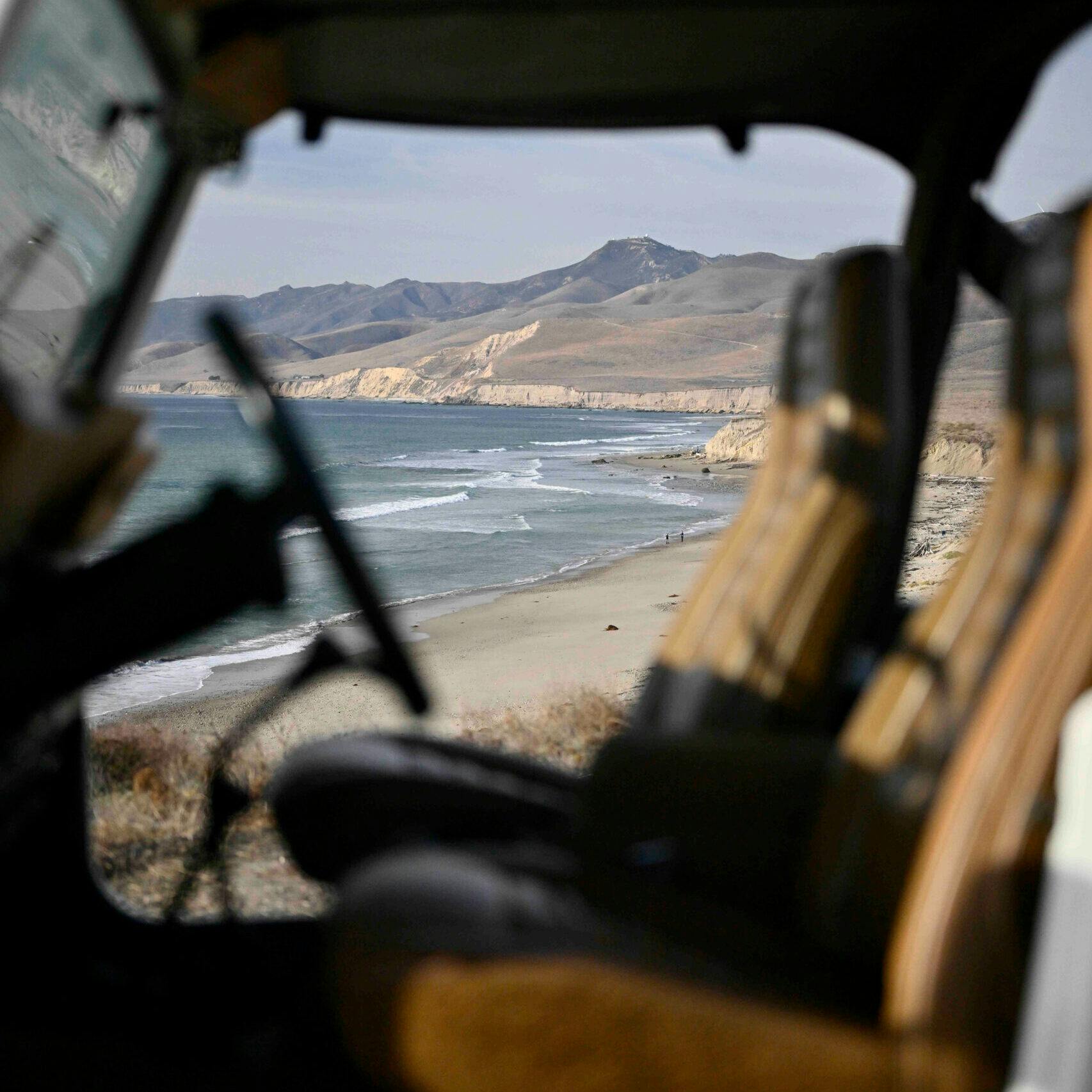

Meanwhile, on the county two-lanes, the torquey 4.2-liter inline-six, nearly Thanksgiving-gravy smooth and backed by a five-speed gearbox, was a delight. It offers only 112 horsepower but somehow feels entirely competent, willing, and unhurried. Keep your speed in check, master the CJ-7’s dynamic hijinks, deal with the heinous wind noise (earplugs work!), and the day is as golden as those pretty Laredo stripes.

This well-kept example, kindly lent by an anonymous private owner, celebrated a milestone, turning 60,000 miles old on our adventure, along the way benefiting from one excellent respray, an aftermarket audio system, stainless bumpers, and some museum-grade pampering. Dutifully carrying its surf cargo and with its Dana 300 transfer case ready for action—much more rugged action, if possible—the CJ was an outlier in our group, and it posed a question: What exactly is the attraction of a convertible, and why do we need one?
In 1943, Abraham Maslow postulated that humans are most basically driven to seek food and shelter, and when they’re assured, strive upward in pursuit of comfort, companionship, purposeful work, etc. But maybe, just maybe, some part of us always craves the wild and woolly physical world, and convertibles, like motorcycles and boats, let us level down on Maslow’s famous hierarchy to this more visceral place without having to live there full time. In our way of thinking, convertibles do exactly this—letting us sensually connect with the natural environment at a pace and with the control and security that we like. How’s that for deep?


Atypical within this group and a less polished road warrior, the Jeep is way more versatile than the other cars, none of which has a whiff of a chance of beating Baja or the Rubicon, whereas the CJ can whip those and Boston or Raleigh, too. Clearly, life is better with choices. Maybe that’s why nearly 380,000 CJ-7s were sold from 1976-86, explaining why the final-year CJ-7 Laredo model remains affordable at $11,000 to $32,600 in Hagerty valuation.
Time Capsule Corvette

A windblown morning led to midday hunger for our crew, happily sated by a sandwich break in Los Olivos. Originally an 1860s stagecoach stop, the town has seemingly developed little since, with a flagpole still occupying the main intersection and a nearby dirt lot for parking. On the very soil that horse teams likely once trod, the third-generation Corvette awaited. And not just any C3 model at that. Owned by Dave Sprowl, it is a true time capsule, with only 11,000 miles on the odometer, completely original paint, interior, and running gear, and a National Corvette Restorers Society (NCRS) Chapter Top Flight Award to prove it. Even its configuration is somewhat rare; 5474 convertibles were built for ’74, or 15 percent of the total production run that year.
Significantly, 1974 represents the year that Corvette’s ancestral chrome bumpers disappeared forever, replaced by urethane covers over impact-absorbing beams. That was 50 years ago, though (yikes!). Derided at the time by purists who felt real cars deserved real bumpers, the so-called buggy bumper ’74 Vette looks epic today, we think. The design is aging beautifully and remains strongly emblematic of Corvette’s unique proposition: large and in charge, with over-the-top styling. Parked alongside new Teslas and Taycans, why, it absolutely stands proud. Our lucky test car, finished in its original Medium Red Metallic with Dark Red vinyl interior, was beyond striking.

Vectoring north onto Foxen Canyon Road, we were able to give the Corvette the boot. Two 350-cubic-inch small-block V-8s and a 454 were available in ’74, this one equipped with the 195-hp 350. Backed by a three-speed Turbo Hydra-Matic, it’s lively but hardly ground-pounding, as were some Corvettes of the previous decade. (A low point for Corvette output came in ’75, when the base engine wheezed out a mere 165 horses.)


Suitably poked, the C3 gathered up its skirts and hustled along the road with a satisfying V-8 rumble, and the shifts were quick and firm. So was the chassis, absent the tens or hundreds of thousands of miles that similar Vettes have covered over their half-century on our beautiful planet. Ahead, the long hood tapered away, like the flared bow of a WWII Royal Navy corvette plunging into big seas. And flanking it were the C3’s tall, angular fenders, directives from styling chief Bill Mitchell, who championed the prescient Mako Shark II design concept in 1965.

Compared with the MG and Jeep, the Corvette felt super comfortable. Passengers sit low and tight inside, and the ergonomics are just right for real people—thank GM’s human factors engineering for that. The only negative worth reporting was felt when the road got bumpy. Here, as with most of our vehicles, the C3 suspension—the design of which debuted as the 1963 Sting Ray—pounded the ladder frame and body like howitzers shelling an enemy line. But forget that Teddy Roosevelt Rough Riders stuff for a minute; a winery suddenly appeared on the right. Hard on the brakes (no ABS till 1986), the Vette dived into the lot and we snooped quickly for deals on a case of pinot, a Santa Ynez Valley specialty. We didn’t score a case, but a nice bottle got stowed behind the seats for later.
Ordinarily, per Hagerty’s valuation, a ’74 Corvette with the base 350 V-8 might be found for $17,600 in good condition, with one in fair shape grabbable for $11,400. But up top, in #1 condition, with NCRS pedigree, think more like $50,200. You can bet we were careful with this one.
The USS Continental

Never were American land yachts more ’60s than the fourth-generation, “JFK” Continental convertibles of 1961–67. Expensive, exclusive, enormous, and over-the-top luxurious, this example is also exceedingly rare. One of just 2276 built for ’67, it was sold new by a Downey, California, dealership and has remained within one extended family ever since. Thanks to 35 years of storage leading into the 2000s, it hadn’t even cracked 88,000 miles by the time our baby blues first beheld its platinum paint.
America was on top in this period, Ford was headlong in its Total Performance push, horsepower ratings were peaking, and emissions and safety regulations had yet to crater automakers’ autonomy. Moreover, with the nation mesmerized by space flight, power, automation, and convenience, the Continental went all in to deliver everything. Wealth meant being in command, and nothing said command like sheer size.
No company ever disguised a Rhode Island–size road train better. A masterwork of midcentury design, the Continental’s lines are crisp and reserved, the brightwork is tasteful, and the enormous square footage of generally flat sheetmetal appears graceful, despite the grandiosity.

In person, this convertible, owned by Montecito, California, real-estate agent Nick Svensson, looks beyond enormous. It fits by scant inches inside his garage near the beach, in a neighborhood where homes carry six zeros in their Zillow price profiles. In lending us the car, Nick—traveling at the time—allowed as how we might have to clean it up a bit. That basically meant treating the engine to a jumpstart, attaching the 2024 registration sticker, checking tires and fluids, and visiting a local wash/detail shop. Easy.

Underway, we quickly learned piloting this droptop dreadnought is an experience unlike the others. The driver confronts an interesting blend of grandeur and simplicity. Other than a speedometer and fuel gauge, there are no other instruments, per se, just discrete trouble lights that, one should presume, will illuminate in the event of distress in the engine room.
It’s a four-door six-seater, so flying solo for a time in the afternoon, we felt a bit like Sir Francis Chichester singlehandedly circling the globe in his 53-foot Gipsy Moth IV. The helm—er, steering wheel—responded to the lightest of touches, as did the accelerator and brakes. However, that body motion! Chichester complained about how his ketch sailed, and since he did the voyage in 1966–67, he might have well understood this Continental, for it pitched and rolled like a sailboat. Riding up the sweeping, fast State Route 154 out of town, and later on U.S. Route 101, it was indeed a magnificent machine. But on the winding backroads, the body heeled in the turns, porpoised over humps, and dived under braking. Yahoo!

A monarch of motorcars, the Continental considers the driver’s inputs as suggestions more than commands, stamping its authority even upon its owner. Also, it doesn’t deign to ask permission to go where it pleases, to be early, late, or anything in between. It is the whole show, knows it, and arrives in style when it damned well pleases. It is, in a word, presidential.
Among our borrowed test fleet, the Continental drew the most attention, the most smiles, and evoked the most conversation. It’s that impactful and friendly. We found this meaningful since barely a third of the current U.S. population was alive when the car was new. For young and old, seeing it was like glimpsing a living, breathing brontosaurus. Is that even real?
Also unreal is the value. A fair example is $26,500, per Hagerty valuation, which rockets up to $108,000 for a ’67 convertible in concours shape.
Ignition Impossible


It might seem mean to note that in two days of driving for this story, only the massive Continental required anything but gas (a quart of oil topped up the big six-quart sump). And only the MG suffered a failure, ignominiously an electrical one. But that’s what happened as the pretty MGB went pop-pop-stop along a lazy backroad—its happy place—in mid-afternoon. On a dirt turnout flanked by a garage-size compost pile and a rusty ranch gate, an hour of troubleshooting by photographer James Lipman, Hagerty editor-at-large Aaron Robinson, and the author determined that the distributor rotor was mismatched to the cap. How the car ran until that point remains a mystery, but we knew the coil was robust because it nearly shocked Lipman out of his shoes while we investigated. An SOS to Moss Motors and the company dispatched its nearest employee with various rotors; oddly the one that fit came from his personal vintage Mini, but it sufficed, and we continued with nary a hiccup afterward. Better lucky than good.
The trouble put us behind the eight ball on time, but that’s classic for vintage trips. We thus pivoted to enjoy the remaining daylight in wine country before roosting at the Skyview Los Alamos, a restored 1959 motel poised on a hill above the old ranching community (population: 1839) and flagged by a classic illuminated MOTEL sign (creepily, like in Psycho). The motel was formerly in decline, but a few million bucks reportedly brought it up to boutique status, and the restaurant is good. Even better, the cars looked great in the lot—every one of them.
That bottle of pinot noir didn’t last long at dinner, but the convertible conversation certainly did.

***
Check out the Hagerty Media homepage so you don’t miss a single story, or better yet, bookmark it. To get our best stories delivered right to your inbox, subscribe to our newsletters.

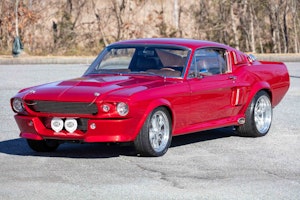


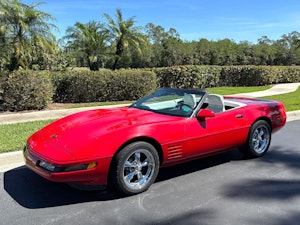

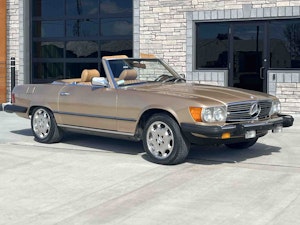

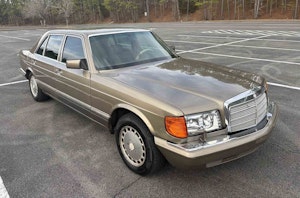


























This is my second sumner of a drop top.
My convertible of choice is the C5 Corvette.
It by far is the best choice of many options for a drop too. These cars are already a performance bargain but they are not the rake traps of cowl shake that many are.
I also have the leg room of the Lincoln and all the modern safety features.
I own a TTop car and it is great but nothing passes up a drop top for that full feeling of openness in traveling.
I have a convertible and a T-Top, but I rarely take the tops out of the T… I’m worried about scratching them or having one self-eject because it did not latch in correctly. If you want to travel topless, I strongly recommend going all the way with a convertible
My t tops will not pop out or scratch in their bags. I do worry about dropping them as they no longer make glass for a Fiero T top.
I did buy a spare nos set as back up when I saw a set for sale.
My sister had a 79 Buick Regal that had a T-top commit suicide on the highway by flinging itself into the air. This led to the discovery that many T-tops were dealer-added options and far from factory. I got drafted into the replacement search and discovered that there were at least 3 flavors of T-tops that found their way onto that particular car. We were able to find one (in the 90s mind you… don’t think we would yield similar results today) but that experience has been permanently etched into my mind.
You sure it was a Buick and not a Connery-era DB5? 😉
TG: I think you’re over thinking the potential T Top issues. I had an 82 280zx with Tops. Initially when removing the tops I was very careful about them for same concerns as you. Carefully slid them into the padded pouches provided for their storage. Then I tied them down securely behind the seats with the factory tie down straps. Not too long after owning the car I became adept at removing them & placing them behind me while sitting @ a traffic light. Had I had a garage- those tops would have always been off the car. All in all, they never flew off the car, they never leaked & never scratched. Forget about the “what ifs” and enjoy the T Top Less Drive As It Was Meant To Be.
Hyperv6
I’ve had my C5 convertible for about 15 years and have driven it from NJ to Amelia Is. Fl. multiple times. Love the look of the car and always enjoy it’s driveability and it’s styling. Only, negative is, I have to get out of the car to use the top. Other really good thing about it is ample storage space for those week long trips.
Hiya, Hyper! I am also a happy C5 Vette droptop driver. Mine is a 2003 50th Anniversary version. 6-speed manual. Bought it very lightly used (only 21K miles) in 2009. As you and MWest noted, it’s a solid car, free of cowl shake, plenty of room in the cockpit, and decent trunk size, even when the top is down. And most importantly, just a blast to drive!
To paraphrase Charlton Heston, “They’ll have to pry my manual transmission, naturally-aspirated V8 out of my cold, dead hands!”
I had the first delivered automatic Vette in Houston. It was ordered for AJ’s wife along with a T-top (AJFoyt Chevy). She opted for the t-top. I put my $500 down and waited. It was delivered with a sticker on the drivers window saying that it wasn’t to be released until it passed emissions test. Seems that the distributor for the automatic was not in compliance. I rolled down the window and drove out. It was about two weeks before a fix was found and I had to return to the dealer for the fix. But for two weeks I was the envy of all the gear-heads on the street.
I’ve been driving “Modern MGs,” aka, Miatas, since 1996. Wouldn’t enjoy country roads any way other than in a roofless car.
Michael,
I agree. I grew up with my Triumph Spitfire, TR4A and my buddies MG’s. I was Tanners Miata target demographic. The guy who grew up with British 2 seaters and was OK with all those Lucas idiosyncrasies. I kept my 64 TR4A till I bought my 1990 Miata. Miata was my TR4A but without all the Lucas idiosyncrasies, I had gotten too old to deal with my old friend Lucas. We currently own 3 Miata’s including my 2nd V8 version, my wife’s Miata and the one I’ve been racing for 20 years. Miata is the answer to every 2 seater fun sports car question. In total we’ve owned 5 Miata’s. Including a 2019 RF.
72 Skylark Convert owned since 82 says hello. First vehicle my lovely bride and I bought. $1500 in Denver. Nothing like a drop top day! And since the top is not too good, most days are..
Ahhh convertibles… I started with a 68 Impala, 300 horse 327 with a turbo 400, power windows and top. Plenty of juice to haul that barge around. Went to a Rabbit cabriolet. Don’t hold that against me. Great little car. Currently the stable holds 69 Chevelle SS 396, 325hp 4 speed convertible and a 68 Datsun roadster that I swapped a KA24 with its 5 speed into it. They’re not leaving anytime soon. Smiles per miles!!!
Weapon of choice for drop top cruising? Since 1979, my 1970 road runner convert with a 383 4 speed. I has the power, the 3 pedal make it MUCH MORE fun and hardly anybody outside of the Mopar world realizes that Plymouth made only 824 examples. And a run to the Delsea Drive In movies (NJ) with the top down on a nice summer night, what could be better?
I’ve been in my convertible phase for over 20 years. Currently, 2x AMG and a Corvette, and a Jeep Gladiator with a ‘removable’ top, although it’s a pain and has only given way to the soft top one summer, and is my winter daily. Along the way, Volvo, Lexus, Mitsubishi, Toyota, several Mercedes and another Corvette. Here in New England, not much beats a top-down drive through the mountains in the fall, but generally, if it’s a good day for driving, it’s a good day to put the top-down.
And I hate it when I post too-quickly. Hey, Hagerty, it’s the 21st century.
I’ve owned several convertibles, including a few CJs, but the summer sun in SW Idaho (we’re a half-mile and higher here) can be brutal. As I age, hot seats, skin cancer, and sun fade on interiors have become more important (yes, I know there are ways to avoid at least some of those), so I doubt I’ll do another drop top car. I do miss the view, though!
Everyone should own a convertible at least once in their lifetime. Had my convertible, enjoyed it, came to regret selling it. Now it’s time for my wife to get hers. No plans to sell this one, though.
My first convertible was a red 60 Impala convertible with a black top I bought in 1964 right after I graduated high school. My wife and I (her car) now have a 95 Cutlass Supreme convertible that is red with a black top. We have been married 58 years and I had the Impala when we married. In between these two cars there have been two 72 Cutlass convertibles and a 54 Olds Super 88 convertible. The 95 Cutlass may be our last and we plan to drive off in it from our 60th anniversary party like we did in the Impala on our honeymoon in 1966.
My father bought us kids a brand new 1964 Ford 500 XL convertible in the Fall of 1963 when the new 64s hit the showrooms. Ever since then I’ve craved convertibles and now drive a Mercedes SL 500. It is so much fun in the Summertime. Problem is, now I have a hard time getting in and out of it. I am looking at larger previously owned Mercedes convertibles such as the S type or E type as they may be easier for an 80s gentelman to enter and exit.
I’ve considered getting a Miata for the fun that is available in a top down car. My Supra does have a Targa top like Corvette’s do but I rarely use it.
My ‘09 MBZ SL 550 satisfies the occasional urge for open air cruising and can readily revert back to a hardtop for those normal less inviting weather days and for more secure parking. Sorry MBZ has done away with the hardtop convertible SL. .
I’m lucky enough to live on the left coast so I can daily my convertibles.
Most years I can drive 90% + with the wind in my hair.
Any convertible is better than a hardtop.
I’ll even put the AC on if needed.
Mornings with low fog are the
Most fun.
It’s like a short 30 min vacation to/from work.
Life is too damn short.
Buy the convertible you want now.
Living on the West Coast my entire life I’ve had several convertibles over the years; some were my daily-driver (1988 RX-7, 2001 BMW 330Ci, 2012 Audi A5) and the rest were fun summer cruisers (1967 Triumph TR-4A, 1963 Corvette, 2002 BMW Z8… my current ride). Loved every one of them.
Dropped the top on my 87 MB 560sl on a beautiful but a little hot day as I went to/from Senior Softball. There are days when I am fixing something I wonder why I keep working on it and then I drop the top and all my concerns drift away…at least until I have to fix something else. But I do enjoy the DRIVE.
Some belated corrections: The ’75 Vette may have had only 165 HP, but it was hardly the feeblest as its ancestor had the Blue Flame Six with a whole 115 HP. Also, the Jeep has semi-elliptical leaf springs, not elliptical. Some carriages and antique cars did indeed have upper and lower leaf springs, bowed in opposite directions to make an ellipse. The economy champ of leaf springs might be the MK 1 Austin Healy Sprite, with quarter-elliptical leaf springs for the rear axle. I rented a Chrysler LeBaron convertible on an autumn trip to new England and drove south from New Hampshire, enjoying the breeze and the view of the leaves changing color. Unforgettable. I very much enjoyed my NA Miata for the few months that I had it before someone turned left in front of me and totaled it. My vote for the ultimate convertible? A Lotus 7.